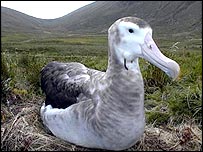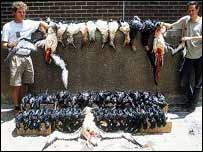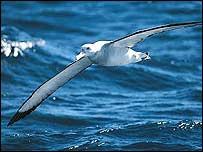|
BirdLife says longline fishing for Patagonian toothfish, tuna and other commercially valuable species is the single greatest global threat to seabirds, killing more than 300,000 annually.
Of that total, it estimates 100,000 are albatrosses, with the rest a mixture of petrels, fulmars, shearwaters and other species.
The fishing lines can be up to 130 kilometres (80 miles) long. Seabirds scavenge behind the boats, are caught as they try to take the bait from the hooks, and drown when they are dragged underwater.
Other measures Acap signatories have to implement include research and monitoring, eradication at breeding sites of introduced species such as rats and feral cats, reduction of disturbance and habitat loss, and reduction of marine pollution.
Plummeting stocks
Ten countries have signed the agreement, and apart from
South Africa those which have ratified it are Australia,
Ecuador and New Zealand. The UK is expected to ratify
Acap next month.
|


